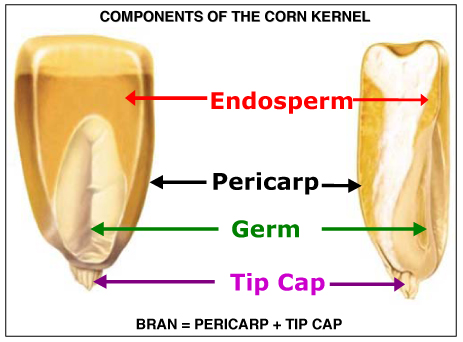We all have it in our pantries because our mothers did. We've never actually seen them use it, but we know we're supposed to have it. Like baking soda. Or iodized salt. And we pass it by in the baking aisle at the market wondering what the fuck this damn thing is used for.
"Cornstarch. Does it come from corn?" we all wonder as a collective mass of confused culinary novices.
Here's what it looks like if you ever buy the stuff and open it up:
"Cornstarch. Does it come from corn?" we all wonder as a collective mass of confused culinary novices.
Here's what it looks like if you ever buy the stuff and open it up:
It looks like a cross between all purpose flour and powdered sugar. You'll be tempted to dip your finger in and take a taste, expecting the sweet heaven of powdered sugar that instantly takes us back to childhood. But then you'll be confused that it tastes, in fact, like...nothing.
Bland.
No taste.
Nada.
Then what the hell is it and what is it used for if it tastes like...space?
Yes, it comes from corn. The endosperm of the corn kernel, to be exact. Check it out:
So they take this section of the corn kernel and grind it up into a powder. And therefore henceforth thus in conclusion, you have cornstarch.
Ok, so that's where it comes from, but what does it do?
It's used to thicken things. It's thickening power is very strong -- instantaneous actually -- so it's often used to thicken soups, stews, gravies, sauces, and anything liquid that needs a little body to it. And since it's tasteless, you can add it to anything at all.
But there's a huge rule to keep in mind: You must dissolve the cornstarch in cold liquid before adding it to warm or hot liquid to avoid clumps.
If you add the cornstarch powered, for example, directly into a pot of hot soup all you'll get is a clumped up cloud of gummy yucky hot mess. You need to dissolve a tablespoon, let's say, of the cornstarch in a little cup of water first, then add that milky-white dissolved "stuff" into the soup. Then in under 5 seconds the whole soup will be thickened. It's that powerful.
It's stronger than flour to make things thicker. And it's great because the results are literally instantaneous. With flour, you have to work it in slowly, usually at the beginning of the dish's life, having to cook out the raw flour flavor as well, then hope you put enough to have the dish come out thicken enough (which with practice, you can do like second nature). But sometimes the flour is a little stale or you just miscalculated how much liquid you'd end up using, or an ingredient like tomatoes for example ended up rendering a little too much juice during the cooking process, at the end you can simply add a little dissolved cornstarch and you can save the dish to be just the right consistency.
How much should you use? Again, it's actually pretty potent. For a sauce made from pan drippings or from the turkey for Thanksgiving to make the gravy, you'd probably only need a good teaspoon's worth. For a larger pot of soup or stew, probably a heaping tablespoon. It's a very forgiving ingredient in that if you add too much, you can just continue cooking the dish because the longer you cook it, the more you drain out the thickening power. So if you get it just right where you want it, take it off the heat immediately.
Cornstarch is a great pantry Save The Day that you really should keep on hand. Especially with the holidays coming up. It will guarantee give you that thick gravy for Thanksgiving without the clumpy and lumpy mess when you use flour. Check out the recipe below for a super quick turkey gravy.
Some people erroneously think it's "cheating" to use cornstarch. This is stupid - restaurants use it quite often both in baking and savory dishes. Have it in your pantry. Chances are you'll use it like once a year, but it's good to have.
Basic Roasting Gravy (recommend to use with roasted chicken or turkey)
pan drippings from roast
extra broth (chicken, vegetable)
1 tsp cornstarch
1 Tbsp cold water
salt and pepper
fresh herbs (optional)
Remove the roasted chicken or turkey and set aside to rest before carving. While the roast is resting, make a quick gravy. Take the pan drippings of the roast and place in a small saucepan. Using a whisky, gently add about a cup of the broth, melting the "brown bits" into the broth. Bring to a simmer. Dissolve the cornstarch into the cold water in a small container, then whisk into the broth mixture. You'll see it start to thicken. Be careful as it may bubble up so make sure you're ready to remove it form heat quickly if you need to. Whisk and cook until desired thickness, about 10 seconds - 30 seconds. Taste and adjust with salt and pepper to taste. Add some fresh thyme or chopped rosemary or sage if desired to taste, and serve immediately.




No comments:
Post a Comment